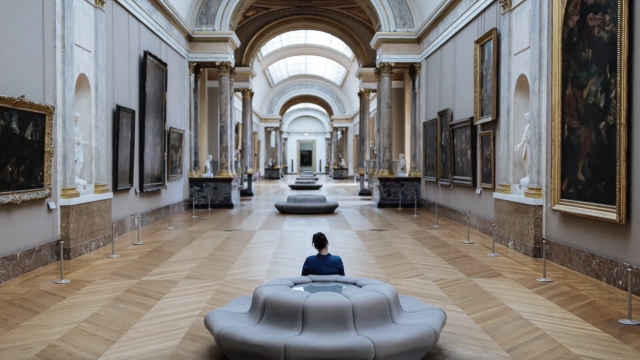As flooding becomes more frequent and severe weather events become more persistent because of climate change, museums across the country are rushing to better protect art from more frequent natural disasters.
"What's happening outside a museum impacts what's happening inside," said Mary Coughlin, with the Corcoran School of Art and Design in Washington, D.C.
We met Coughlin in the Salon Dore, situated inside the school's main campus building. Ornate gold panels and floor-to-ceiling window drapes are only part of the room's elegance. It was built in Paris in 1770 and then moved to the U.S. in the 1900s.
This entire room is a work of art itself, and preserving it is challenging for Coughlin — especially as the weather outside takes more wild swings because of climate change.
"If you think of most museums, the building itself is often a work of art," Coughlin said.
For decades, museums nationwide set strict, uniform standards for temperature and humidity. In the last few years, though, a different approach has emerged. Museum experts now say the guidelines for museums in a place like Phoenix don't need to be the same for an exhibit in New York.
"There is a thought now that are we almost fighting the outside too much, in terms of climate, knowing what is normal for your environment," she added.
Climate change is driving a lot of this, especially as some museums deal with more flooding or rain events.
Many paintings are like sponges, and humidity or moisture causes them to swell up. And once they dry out, damage can occur.
To deal with climate change, the Getty in Los Angeles is designed to close off air circulation in the event of wildfires. The MET in New York has an entire climate security team. And the Louvre in Paris built offsite storage facilities on higher ground less prone to flooding.
But those projects cost millions. Coughlin worries about smaller museums with smaller endowments.
"The question we are facing is how does that impact smaller and midsize museums? What can they do? They can't have massive construction projects," she noted.
At the end of the day, this is about preserving history and adapting to changing environments so priceless works of art are protected.





